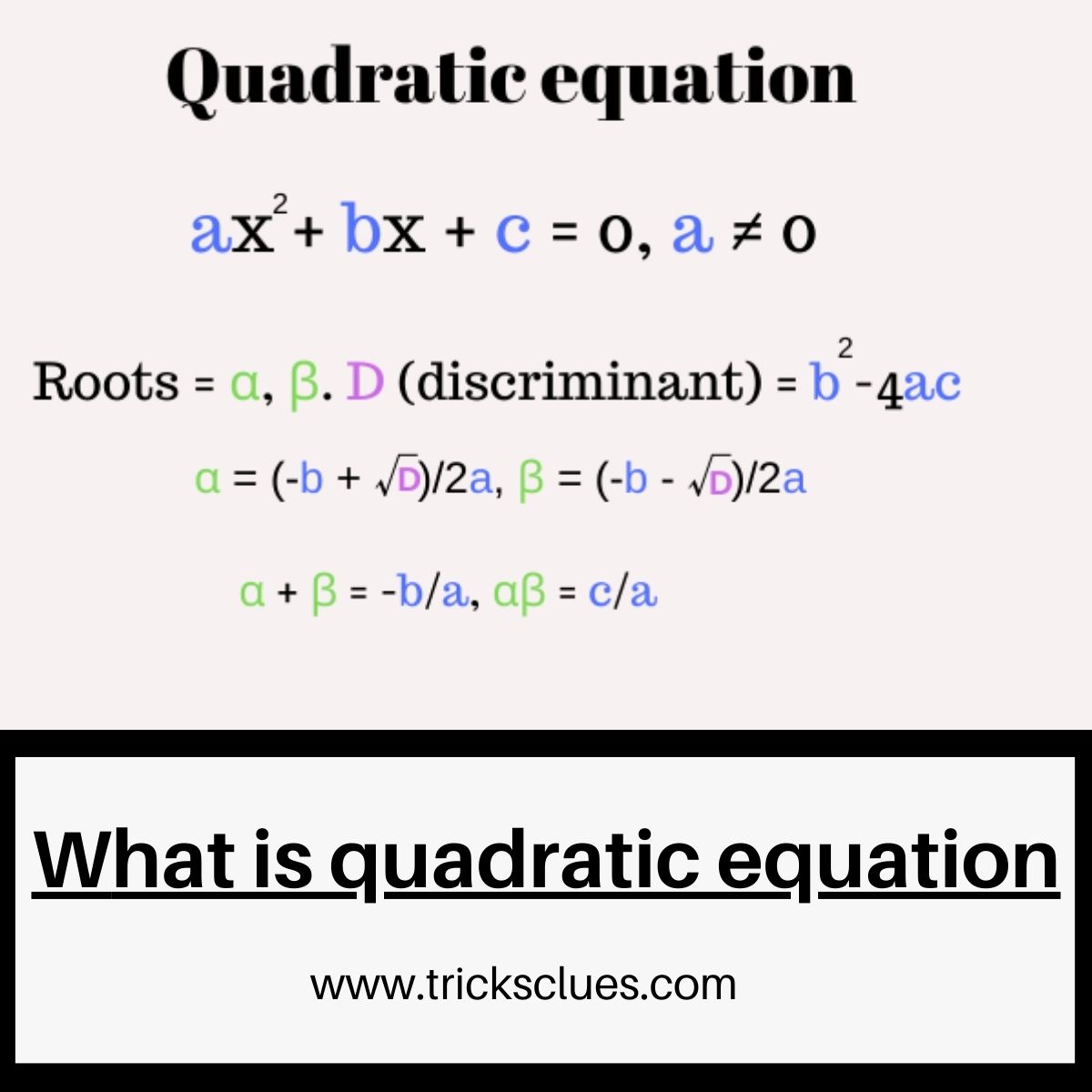The quadratic equation stands as one of the fundamental concepts in algebra, offering a powerful tool to solve a wide array of real-world problems and mathematical puzzles. It is a second-degree polynomial equation, with the general form of ax² + bx + c = 0, where ‘x’ represents the variable, and ‘a’, ‘b’, and ‘c’ are coefficients.
The quadratic equation has its roots in ancient civilizations, notably traced back to Babylonian mathematicians who explored methods to solve what is quadratic equation geometrically. However, it was the ancient Greek mathematicians who formalized the concept, developing methods like completing the square. It wasn’t until the Islamic Golden Age that a more generalized method for solving quadratic equations emerged.
In its modern form, the quadratic equation can be solved using a variety of techniques. The most common methods include factoring, completing the square, and using the quadratic formula. Factoring involves breaking down the equation into smaller factors and then solving for ‘x’. Completing the square transforms the equation into a perfect square trinomial, making it simpler to isolate ‘x’. The quadratic formula, perhaps the most versatile approach, directly provides the solutions for ‘x’ in terms of the coefficients ‘a’, ‘b’, and ‘c’.
The solutions to a quadratic equation are called roots, and they can be real or complex numbers. The nature of these roots can reveal essential information about the behavior of the associated quadratic function. For instance, if the discriminant (the term under the square root in the quadratic formula) is positive, the equation has two distinct real roots, indicating that the quadratic function crosses the x-axis at two points. A discriminant of zero means the equation has a repeated real root, corresponding to the quadratic function touching the x-axis at a single point. And if the discriminant is negative, the equation has complex roots, indicating that the quadratic function does not intersect the x-axis in the real number domain.
The quadratic equation’s applications span various fields, from physics and engineering to economics and computer graphics. In physics, it helps solve problems related to motion, such as calculating the trajectory of a projectile. In engineering, quadratic equations come into play when designing structures, optimizing processes, and analyzing circuits. Economists use quadratic models to study various economic phenomena, such as supply and demand equilibrium. Additionally, computer graphics utilize quadratic equations to create curves and surfaces in digital environments.
In conclusion, the quadratic equation is a foundational concept that has stood the test of time, originating from ancient civilizations and evolving into a versatile mathematical tool with diverse applications. Its elegant solutions and broad utility make it an indispensable component of algebraic understanding and problem-solving across multiple disciplines.













